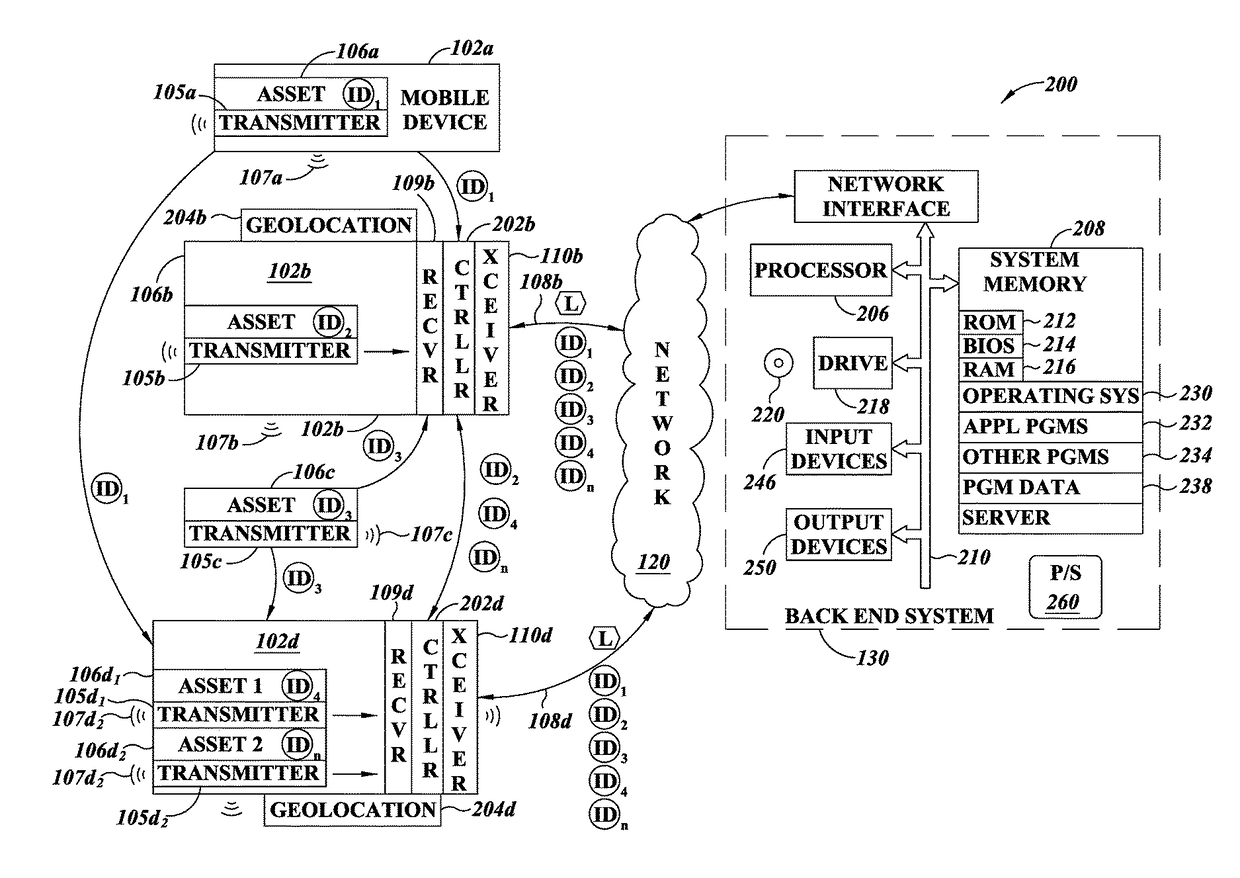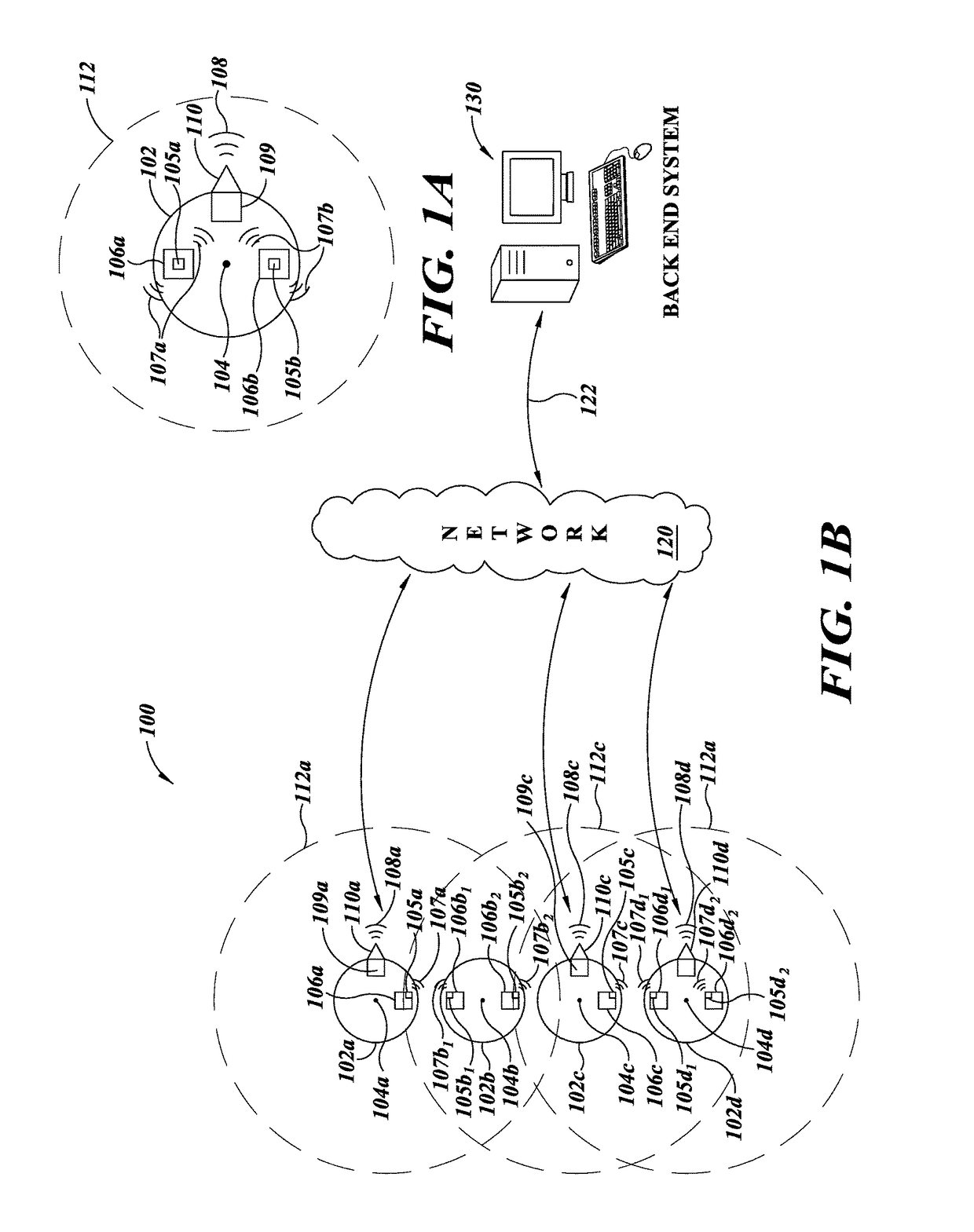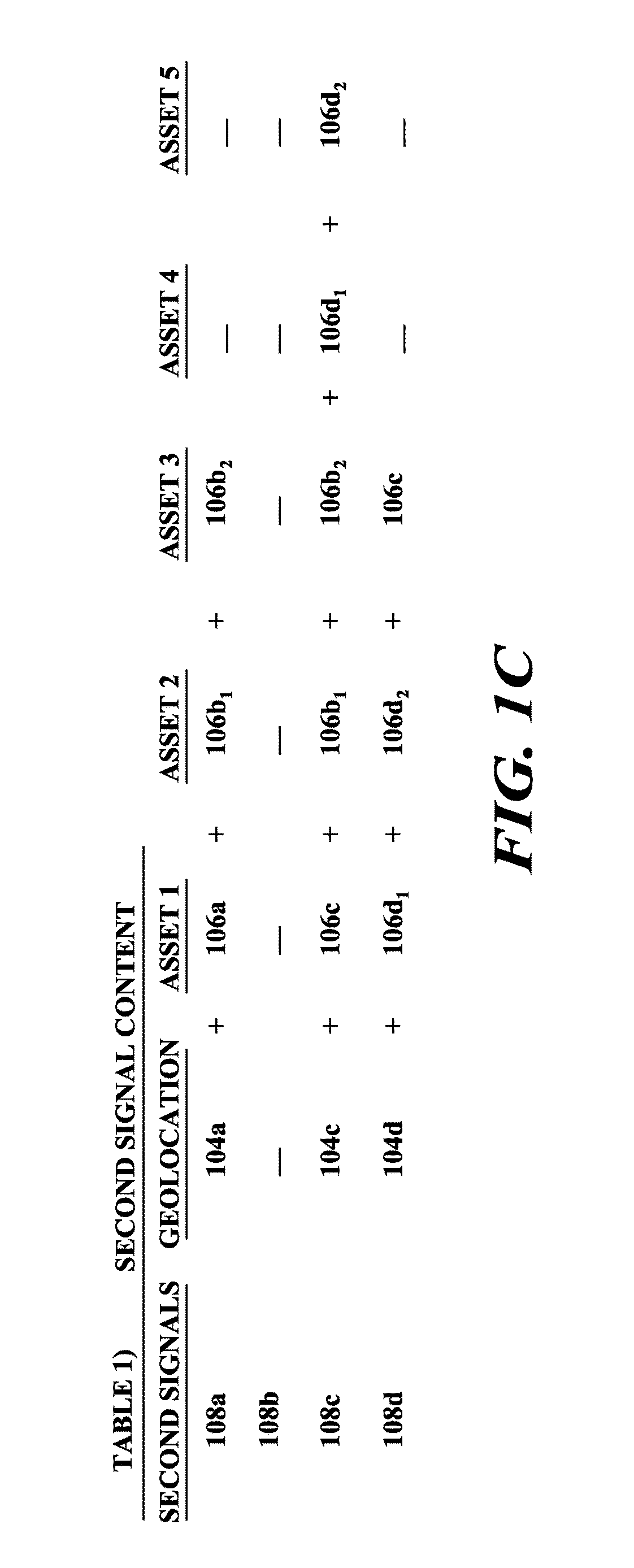Systems and methods for asset tracking using an ad-hoc mesh network of mobile devices
a mobile device and asset tracking technology, applied in the field of asset tracking using a dynamic, ahhoc mesh network, can solve the problems of affecting the acceptance of electrically powered or battery powered vehicles, affecting the efficiency of asset tracking, so as to facilitate rapid exchange and minimize vehicular downtime , the effect of wide acceptan
- Summary
- Abstract
- Description
- Claims
- Application Information
AI Technical Summary
Benefits of technology
Problems solved by technology
Method used
Image
Examples
Embodiment Construction
[0024]In the following description, certain specific details are set forth in order to provide a thorough understanding of various disclosed embodiments. However, one skilled in the relevant art will recognize that embodiments may be practiced without one or more of these specific details, or with other methods, components, materials, etc. In other instances, well-known structures associated with portable electric energy storage device distribution; communications technologies and / or protocols; energy storage devices such as batteries, supercapacitors or ultracapacitors; power converters including but not limited to transformers, rectifiers, DC / DC power converters, switch mode power converters; design and structure of vehicle components; wireless communications protocols; controllers, and communications systems and structures and networks have not been shown or described in detail to avoid unnecessarily obscuring descriptions of the embodiments.
[0025]As used herein, “portable electr...
PUM
 Login to View More
Login to View More Abstract
Description
Claims
Application Information
 Login to View More
Login to View More - R&D
- Intellectual Property
- Life Sciences
- Materials
- Tech Scout
- Unparalleled Data Quality
- Higher Quality Content
- 60% Fewer Hallucinations
Browse by: Latest US Patents, China's latest patents, Technical Efficacy Thesaurus, Application Domain, Technology Topic, Popular Technical Reports.
© 2025 PatSnap. All rights reserved.Legal|Privacy policy|Modern Slavery Act Transparency Statement|Sitemap|About US| Contact US: help@patsnap.com



